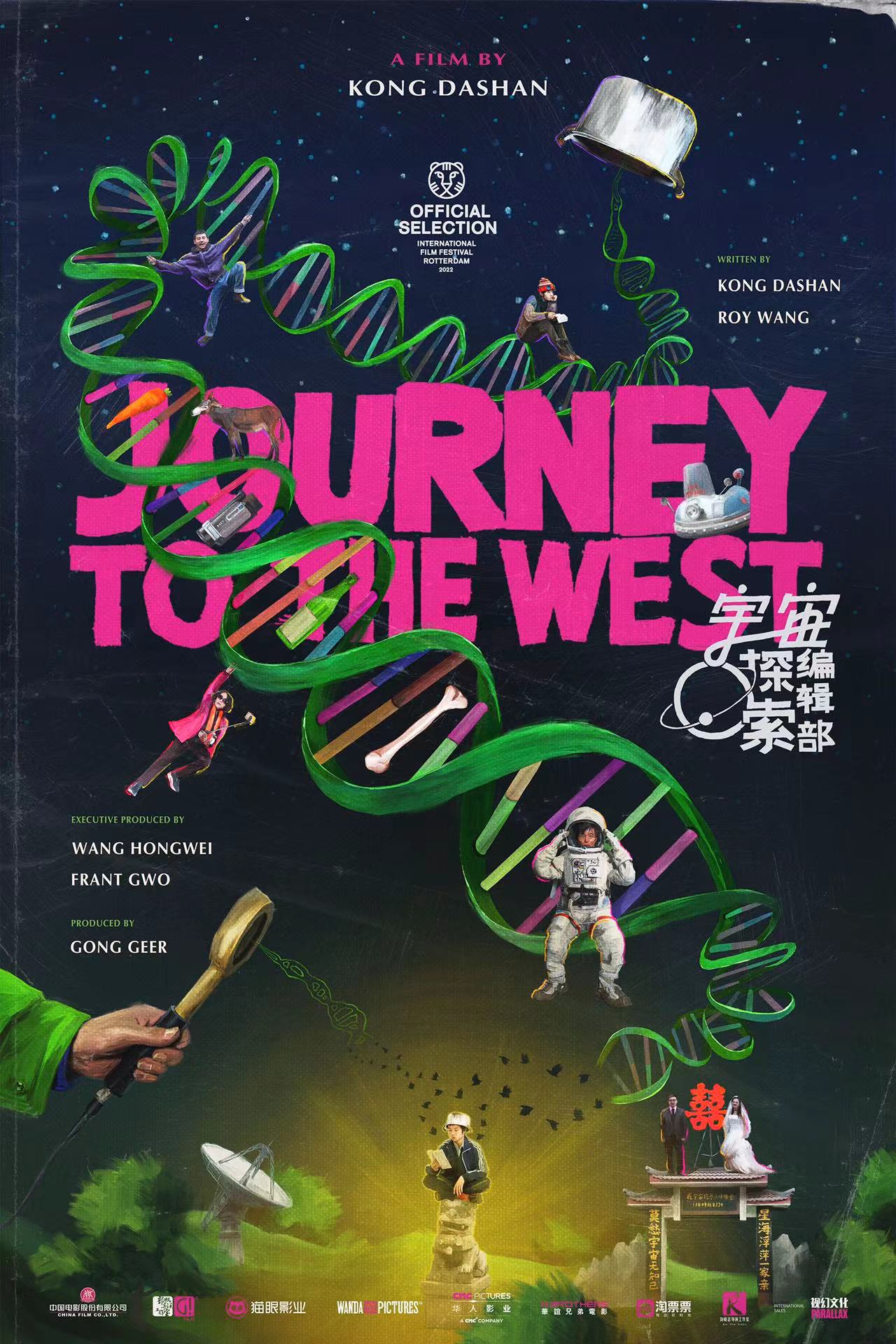by Brian Hioe
語言:
English
Photo Credit: Journey to the West
This is a No Man is an Island film review written in collaboration with Cinema Escapist. Keep an eye out for more!
JOURNEY TO THE WEST (宇宙探索編輯部) is a magnificent debut for first-time director Kong Dashan. The film is not only excellently edited and shot, but also humanistic and funny; it marks Kong as someone to keep an eye on in future years.
Journey to the West, which takes its name and some thematic elements from the historical Chinese novel, follows conspiracy theory magazine editor Tang Zhijun (played by Yang Haoyu) on one of his many excursions in search of the paranormal with his crew. In this, his skeptical deputy and a younger fan join him, along with several others.
Yang turns in an excellent performance as Tang, and largely carries the film. This is by necessity, as Journey is largely a character study of Tang. Yang manages to deliver Tang’s facial expressions and body language so as to convey the character’s earnestness, even charisma. Yet he is ragged and slightly deranged as he travels China, fancying himself as a scientist.

Photo credit: Journey to the West
What emerges is that Tang is driven in his search by the loss of his daughter years before, as well as the search for meaning in an absurd and frequently meaningless world. In this, Tang is shown to be a sympathetic, if comical and deeply alienated character.
Though less fleshed out as an idea, the film also develops the idea that Tang and his followers are a band of outsiders, who have found each other because of their estrangement from the rest of society.
Not all of the characters are fully realized. It is unclear as to what motivates Tang’s lieutenant. Tang’s younger fan is also an underutilized character, as she is primarily positioned as a surrogate daughter figure to Tang. These characters do not manage to have as strong a sense of interiority as Tang is vested with.
There are existential dimensions to this, with the film drawing quick parallels between Tang’s fantasies about the supernatural and religious mania, juxtaposing Tang with individuals in an asylum dressed as Buddhist monk Xuanzang, the protagonist of the historical “Journey to the West”, or other religious figures. Likewise, many of the conspiracy theories that Tang believes in blend the supernatural and science fiction.
Journey to the West draws in viewers from the beginning, with scarcely a dull moment. The first twenty minutes or so are among the most involved, featuring an elaborate set-piece in which Tang manages to get trapped in a spacesuit during a visit by a film crew inquiring about renting the suit. Though slightly over the top, the sequence manages to capture not only Tang’s personality, but also the film’s themes and tone.

Photo credit: Journey to the West
The film’s soundtrack mainly sticks with classical music, but finds effective use of it without using an original soundtrack. Where the movie is most accomplished, however, may be its editing and storytelling.
The film begins with a vaguely mockumentary format, including moments in which characters talk directly to viewers and reflect on themselves. This drops out of the movie in favor of a more narrative lens as the film goes on.
Nevertheless, Journey to the West maintains a choppy editing style, with frequent cuts, so as to suggest the disjointed nature of the protagonist’s mind. This adds to Journey to the West and facilitates many of its transitions, with the film’s flow never interrupted by this stylistic element. In this way, the movie is also able to give many mundane moments a sense of significance and weight, as though they were, in fact, vested with the supernatural.
Ultimately, Journey to the West takes a clearly sympathetic lens to Tang and his magazine crew. It aims to suggest that meaning for humans does not lie out there in the beyond, whether that be in outer space, the cosmos, or the supernatural, but in the bonds forged between people. Director Kong Dashan has made an impressive splash with Journey to the West.



